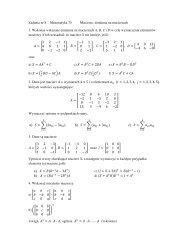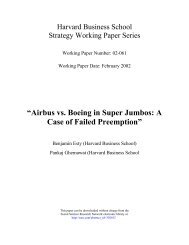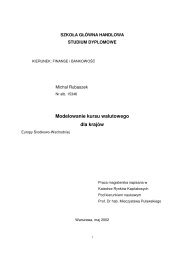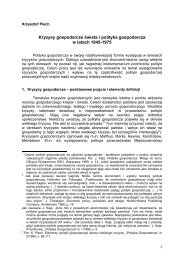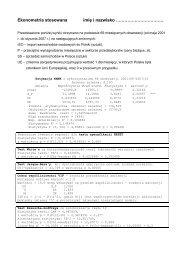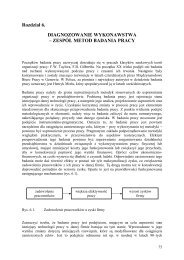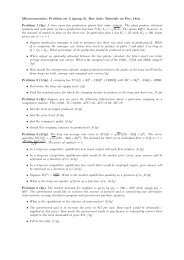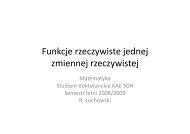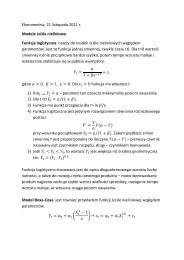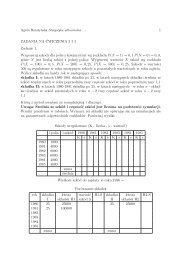Problem sets for Microeconomics II [110051-0471]
Problem sets for Microeconomics II [110051-0471]
Problem sets for Microeconomics II [110051-0471]
You also want an ePaper? Increase the reach of your titles
YUMPU automatically turns print PDFs into web optimized ePapers that Google loves.
4 Decision making under uncertainty and value of<br />
in<strong>for</strong>mation<br />
Exercise 4.1. In 1976, the parents of a 7-year-old boy sued a New York hospital <strong>for</strong><br />
$3.5 million. The boy was blinded shortly after he was born two weeks prematurely.<br />
His parents claimed that hospital doctors administered excessive oxygen<br />
to the baby and that caused the blindness. The case went to trial, and just as the<br />
jury announced it hat reached the verdict, the lawyers <strong>for</strong> the two sides arrived<br />
at an out-of-court settlement of $500,000.<br />
a. If you were the parents, how would you decide whether to accept the settlement<br />
or wait <strong>for</strong> the jury’s decision What probability assessments would<br />
you need to make Would you have accepted the settlement<br />
b. Answer the questions in part a, taking the hospital’s point of view.<br />
Exercise 4.2. A European consortium has spent a considerable amount of time<br />
and money developing a new supersonic aircraft. The aircraft gets high marks on<br />
all per<strong>for</strong>mance measures except noise. In fact, because of the noise, the consortium’s<br />
management is concerned that the U.S. government may impose restrictions<br />
at some of the American airports where the aircraft can land. Management<br />
judges a 50-50 chance that there will be some restrictions. Without restrictions,<br />
management estimates its (present discounted) profit at $125 million; with restrictions,<br />
its profit would be only $25 million. Management must decide now,<br />
be<strong>for</strong>e knowing the government’s decision, whether to redesign parts of the aircraft<br />
to solve the noise problem. The cost of the redesign program is $25 million.<br />
There is a .6 chance that the redesign program will solve the noise problem (in<br />
which case, full landing rights are a certainty) and a .4 chance it will fail.<br />
a. Using decision tree , determine the consortium’s best course of action, assuming<br />
management is risk neutral.<br />
b. Find the expected value of perfect in<strong>for</strong>mation about the redesign program.<br />
Calculate separately the expected value of perfect in<strong>for</strong>mation about the<br />
U.S. government’s decision.<br />
c. Suppose the management of the consortium questions its engineers about the<br />
success or failure of the redesign program prior to committing to it. Management<br />
recognizes that its engineers are likely to be biased in favor of the<br />
program. It judges that if the program truly will succeed, the engineers will<br />
10


![Problem sets for Microeconomics II [110051-0471]](https://img.yumpu.com/32645692/10/500x640/problem-sets-for-microeconomics-ii-110051-0471.jpg)

